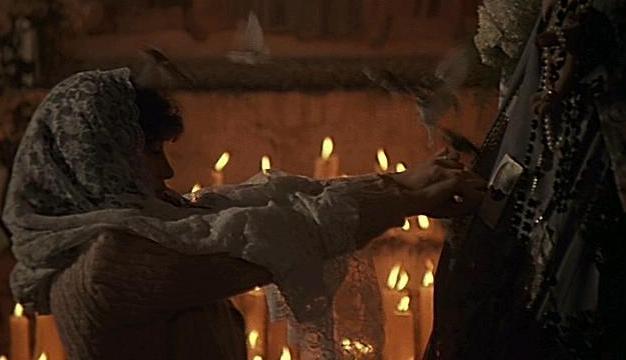
| 85 |

|
| 86 |

|
| 87 |

|
| 88 |

|
| 89 |

|
| 90 |

|
| 91 |

|
| 92 |

|
| 93 |
|
| 94 |
|
| 95 |
|
| 96 |
|
| 97 |
|
| 98 |
|
| 99 |
|
| 100 |
|
2008: Rank | Title | Year
All reviews © Nick Davis
Author's permission must be granted in writing for any duplication or publication.
Browse Films by
Title / Year / Reviews
Nick-Davis.com
Home / Blog / E-Mail
 #98: Nostalghia
#98: Nostalghiain 2008: 96; in 2006: 86; in 2004: 89 dir. Andrei Tarkovsky, 1983 scr. Andrei Tarkovsky and Tonino Guerra; cin. Giuseppe Lanci with Oleg Yankovsky, Erland Josephson, Domiziana Giordano IMDb // Leave a Comment In 100 Words: Not the Tarkovsky film most people invoke when they invoke Tarkovsky. I always expect to demote it and never do, maybe because Nostalghia emanates an unrestful tenderness the other films often lack, palpably personal in its yearnings. Meanwhile, the driftlessness recalls Antonioni, the theology Bergman, the grammar Angelopoulos; the misty outdoor sauna implies purgatory via Fellini. Nostalghia feels like a funeral bouquet bestowed upon a collective dream of cinema as spiritual conduit, a sanctifying ideal of perfect art from which we are all permanent exiles. Yet beauty thrives, amid rueful previsions of apocalypse. Yankovsky's climactic, sublimely arbitrary trial is unforgettable. Food for Thought: The master himself is an indelible meditator on his own artistry in the book Sculpting in Time, published by Knopf in 1987 and the University of Texas Press in 1989. The book features a late chapter about Nostalghia that I admittedly haven't read. Also, at the time of this writing, the just-published issue of Cinema Journal (50.1) announces that the next issue (50.2) will include an article on Nostalghia by Christy Burns. Nice to have something to look forward to, in a film that keeps compelling us, with sorrow or fury, to look backward. N.B. Girl, trust that I am more embarrassed than you are that this "forthcoming" article is now almost five years old. The full title is "Tarkovsky's Nostalghia: Refusing Modernity, Re-Envisioning Beauty" and it appeared in Cinema Journal 50.2 (Winter 2011): 104-122. |
| Permalink | Top 100 | Home | Blog |